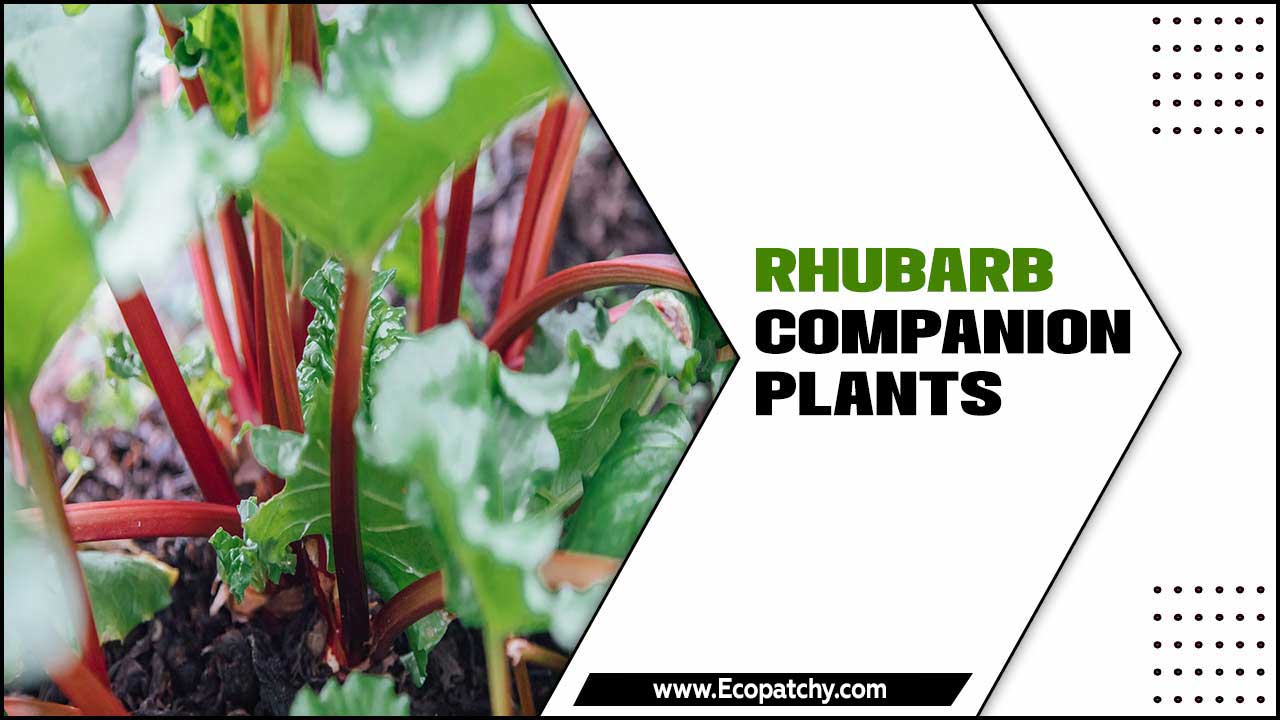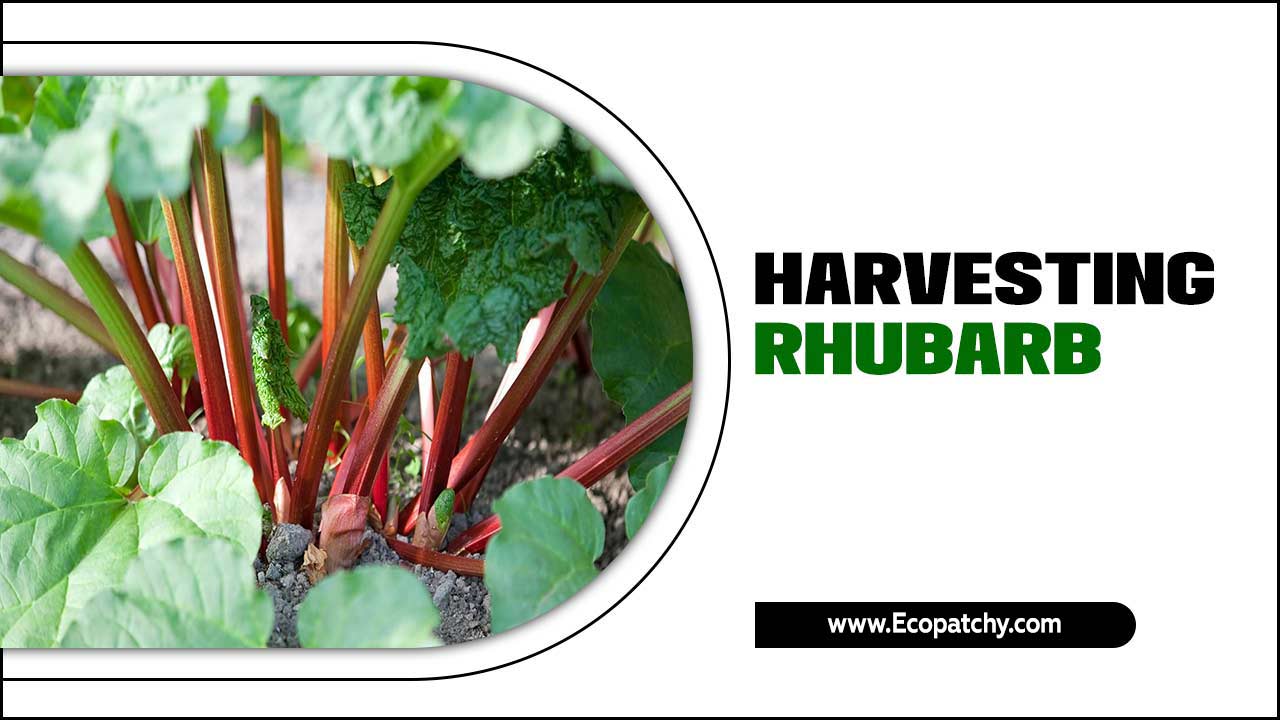Rhubarb, a tangy and versatile plant, has been used in cooking and medicine for centuries. Its characteristic pink and green stalks have graced the tables of many households, adding a unique flavor to a variety of dishes.
This hardy perennial is relatively easy to grow and requires minimal maintenance, making it a popular choice for home gardeners. However, despite its popularity, many people are intimidated by the idea of growing rhubarb in their garden. In this article, we will take a detailed look at the steps involved in successfully growing rhubarb.
From selecting the right variety and location to caring for the plant throughout the year, we will provide you with all the information you need to cultivate a thriving rhubarb crop. So if you’re ready to add this delicious and nutritious plant to your garden, read on to discover the secrets of how to grow rhubarb like a pro.
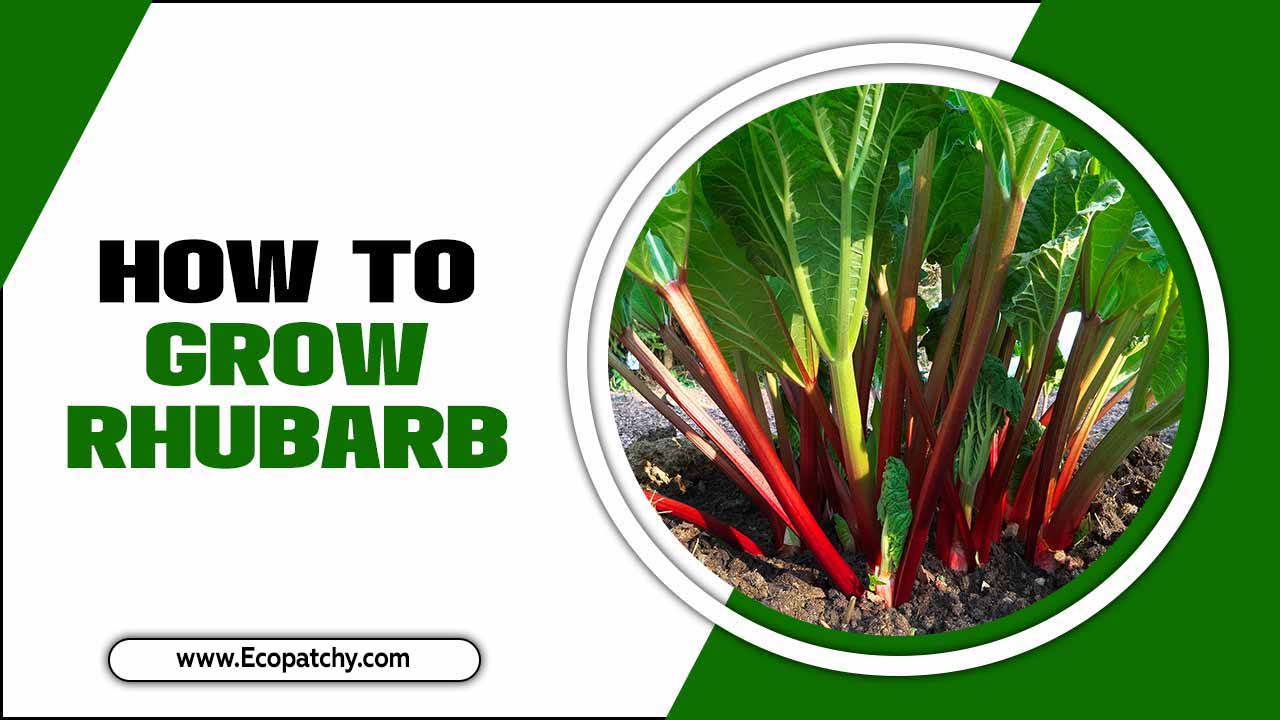
Considerations For Choosing The Right Variety
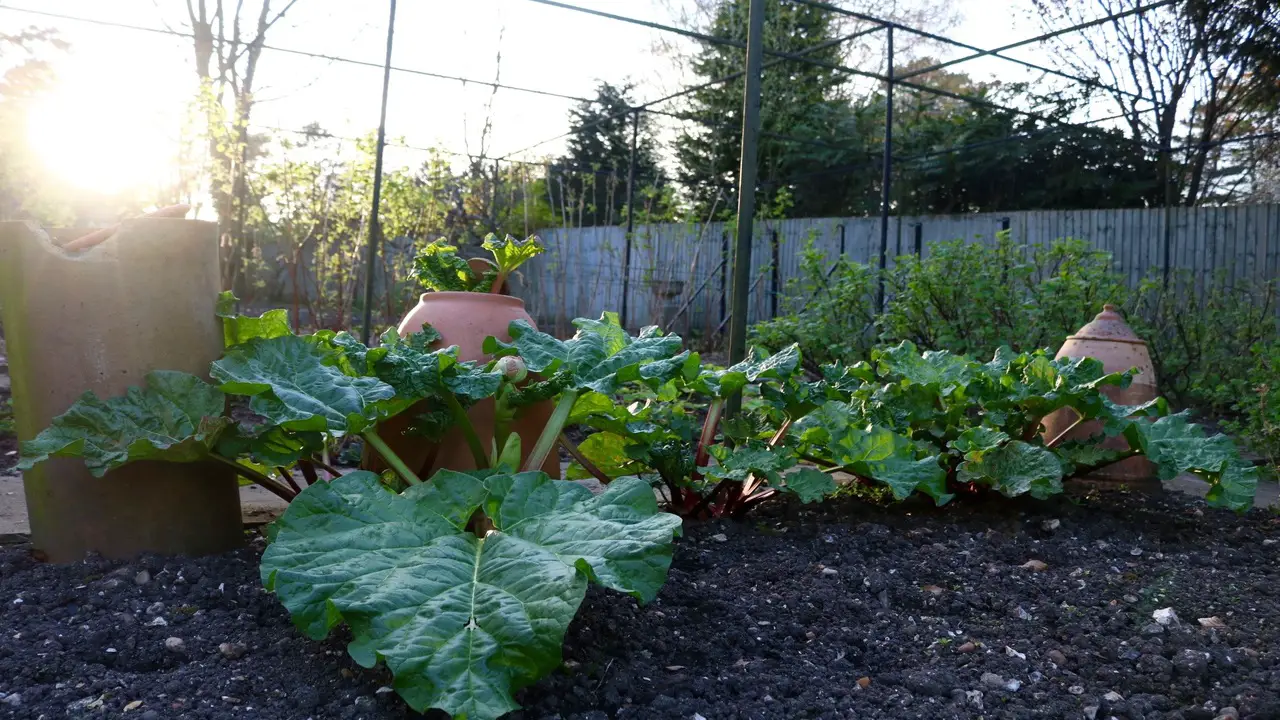
Regarding selecting the right rhubarb for your garden or culinary endeavors, several considerations should not be overlooked. Understanding why it is important to know these factors can greatly impact the success and overall satisfaction of growing and consuming rhubarb.
Knowing the considerations for choosing the right rhubarb ensures that you select a variety that is well-suited for your specific climate and growing conditions.
- Variety: There are different varieties of rhubarb, each with its taste and texture. Consider the variety that suits your preferences and the purpose you have in mind for using rhubarb (e.g., cooking, baking, or eating raw).
- Freshness: Look for fresh rhubarb that is firm and crisp. Avoid rhubarb that is wilted, soft, or has brown spots.
- Color: The color of rhubarb can vary from green to red, with some varieties even having a combination of both. Choose the color that appeals to you and matches your culinary needs.
- Size: Consider the size of the rhubarb stalks. Thicker stalks tend to be more mature and may have a stronger flavor, while thinner stalks are usually more tender and milder in taste.
- Seasonality: Rhubarb is typically in season during the spring and early summer. Choosing rhubarb during its peak season ensures better quality and flavor.
Where And How To Plant Rhubarb
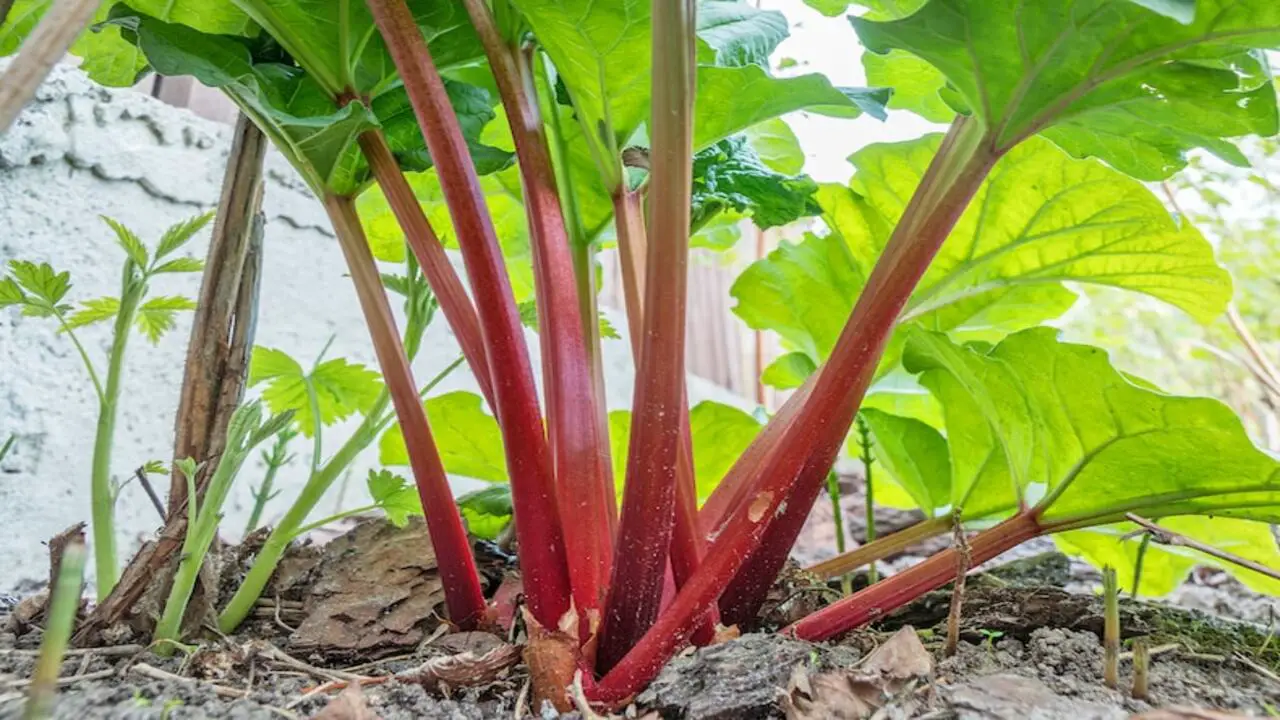
Knowing where and how to plant rhubarb is crucial for successful cultivation and optimal growth. Rhubarb, a perennial vegetable, requires specific conditions to thrive, and understanding these factors is essential for any gardener or farmer.
- Choose a suitable location for planting rhubarb. It thrives in welldrained soil with a pH level between 5.5 and 7.0.
- Select a spot that receives at least 6 hours of direct sunlight per day.
- Prepare the soil by removing weeds and incorporating organic matter, such as compost or wellrotted manure, to improve fertility.
- Dig a hole that is deep and wide enough to accommodate the rhubarb crown comfortably.
- Space multiple plants at least 3 feet apart to allow for their spread as they mature.
- Place the rhubarb crown in the hole, ensuring that the buds are facing upward and the top of the crown is level with the soil surface.
- Backfill the hole with soil, gently firming it around the crown to eliminate air pockets.
- Water the newly planted rhubarb thoroughly and keep the soil consistently moist, but not waterlogged.
- Mulch around the plants to suppress weeds and retain moisture
Timing For Planting Rhubarb
Regarding the timing for planting rhubarb, precision is key in ensuring a successful harvest. Rhubarb, a perennial vegetable known for its tart and tangy stalks, requires careful consideration of the weather and soil conditions before being planted.
Generally, the ideal time to plant rhubarb is in early spring, as soon as the ground can be worked and the soil temperature reaches around 40°F (4°C). This allows the plant to establish its root system before the warmer months arrive.
Propagation Methods (Seeds Vs. Crowns)
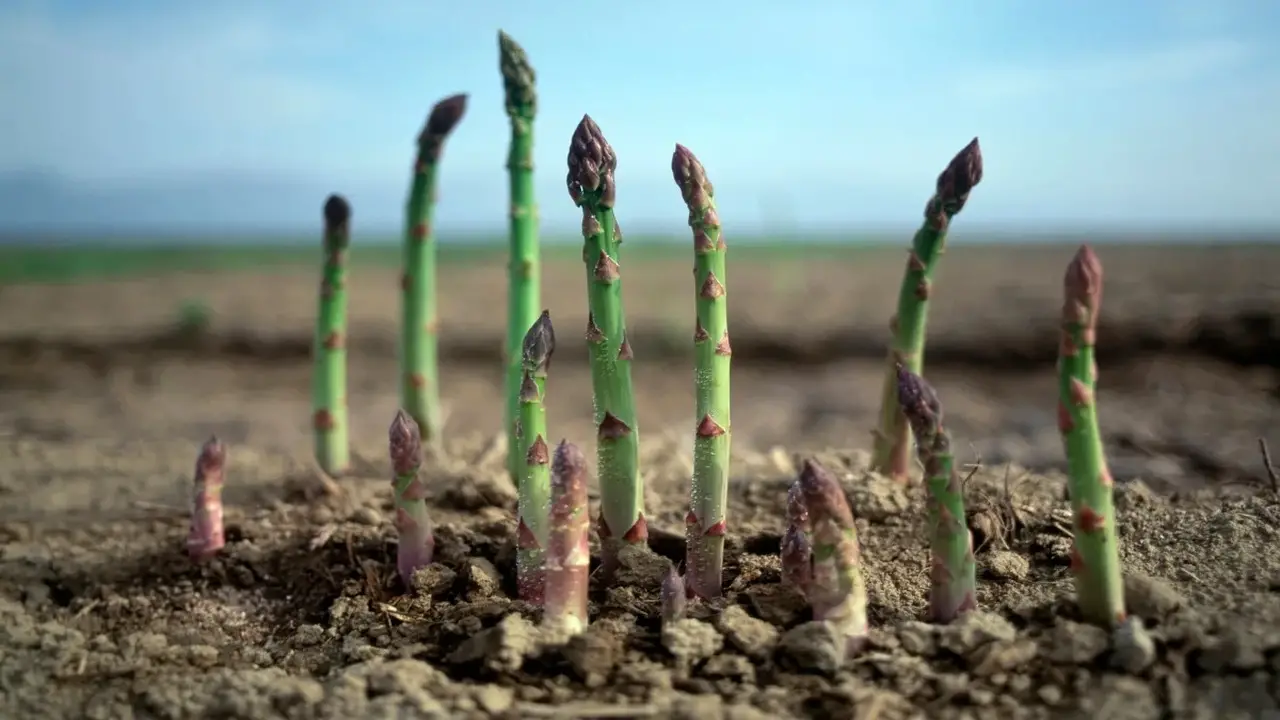
Regarding to growing rhubarb, one of the key decisions that gardeners must make is choosing between propagation methods, specifically seeds or crowns. Both methods have their advantages and considerations that should be taken into account.
Seeds are a common propagation method for many plants, including rhubarb. They are usually more readily available and offer a wider variety of cultivars to choose from. However, growing rhubarb from seeds requires patience and a longer time commitment.
It can take up to two years for the plants to reach maturity and produce a harvestable crop. Additionally, seed-grown plants may not exhibit the same qualities as their parent plants, leading to some variability in taste and appearance.
Planning And Preparing The Garden
Understanding the importance of planning and preparing a rhubarb garden is essential for any gardener seeking to cultivate this unique and versatile plant. Rhubarb, with its vibrant red stalks and tart flavor, can be a valuable addition to any garden, but proper planning and preparation are key to ensuring its success.
- Choose a suitable location for your rhubarb garden, preferably an area with full sun or partial shade.
- Prepare the soil by removing any weeds, rocks, or debris. Rhubarb prefers welldrained soil, so consider adding compost or organic matter to improve the soil’s fertility and drainage.
- Test the soil pH and adjust if necessary. Rhubarb thrives in slightly acidic to neutral soil, with a pH range between 6.0 and 7.0.
- Dig a trench that is about 12 feet deep and wide enough to accommodate the rhubarb roots. Space the trenches around 34 feet apart to allow for sufficient growth and airflow.
- Add a layer of wellrotted manure or compost to the bottom of the trench to provide additional nutrients for the rhubarb plants.
- Plant the rhubarb crowns in the prepared trench, making sure the buds are facing upwards, and the crown is slightly above the soil surface.
4 Steps For How To Grow Rhubarb
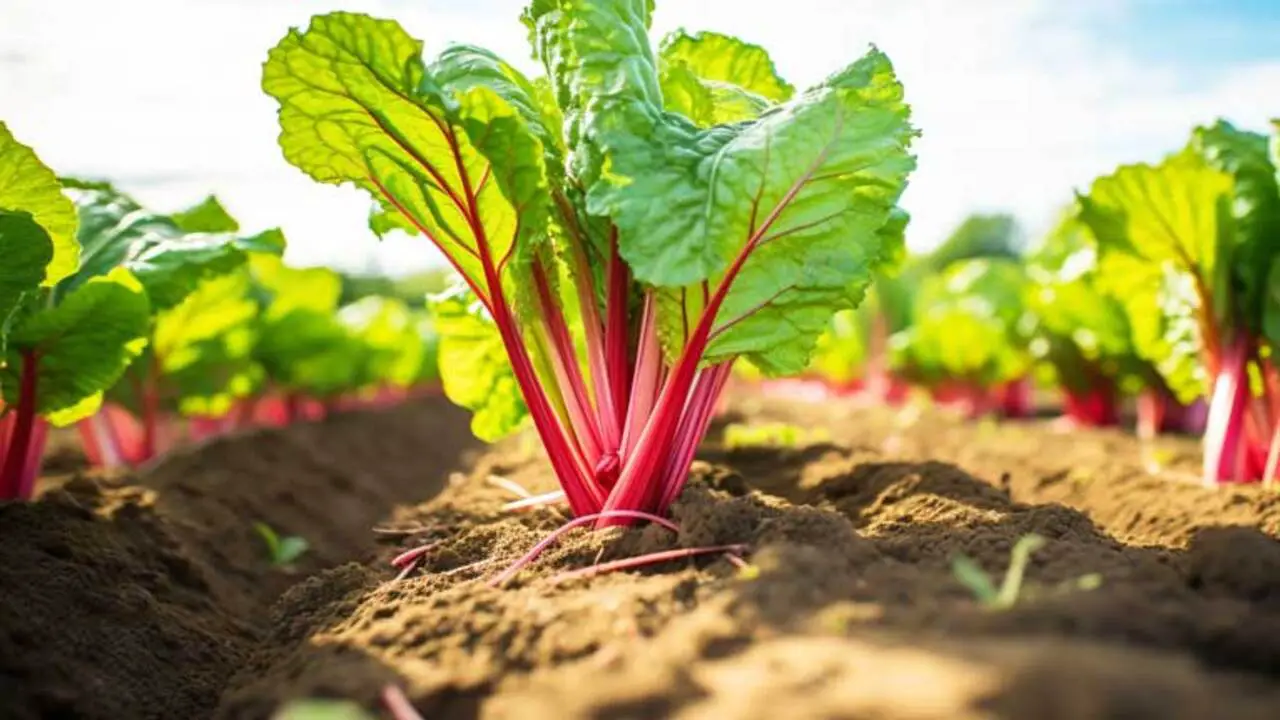
Growing rhubarb is a rewarding and relatively easy endeavor that can provide you with a bountiful harvest of this versatile and delicious plant. Growing rhubarb is a delightful and fulfilling experience that brings forth a host of benefits.
With its vibrant red stalks and tart flavor, this versatile and delicious plant is a welcome addition to any garden. To successfully grow rhubarb, you need to follow a few key steps. Here are 4 steps on How To Grow Rhubarb.
1.Choose A Suitable Location

Regarding growing rhubarb, choosing a suitable location is crucial for ensuring the success of your crop. Rhubarb, a perennial vegetable known for its tart stalks, thrives in cool climates and requires a well-drained soil rich in organic matter. Selecting the right spot in your garden or backyard plays a significant role in providing optimal growing conditions for rhubarb.
Consider the amount of sunlight the chosen location receives. Rhubarb plants require at least six hours of direct sunlight each day to thrive. Therefore, opt for a spot that is not overshadowed by trees or structures that may obstruct the sunlight. Additionally, ensure that the selected area is sheltered from strong winds, as excessive wind can damage the delicate foliage and hinder growth.
2.Prepare The Soil
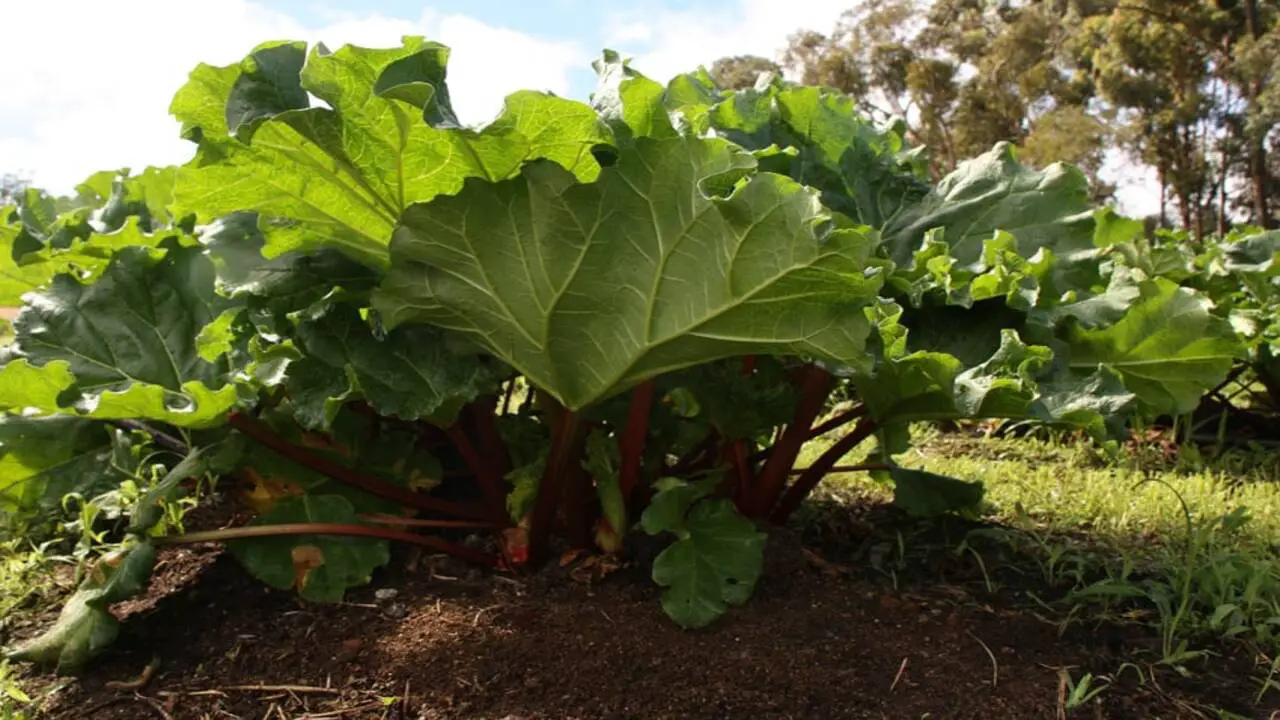
To successfully grow rhubarb, it is crucial to prepare the soil properly. Rhubarb is a hardy perennial plant that thrives in well-drained, fertile soil. Begin by selecting a sunny location in your garden that receives at least six hours of direct sunlight daily. Once you choose the ideal spot, it is time to prepare the soil.
Start by removing any weeds or grass from the area and loosen the soil using a garden fork or a tiller. This will allow for better root penetration and drainage. Next, incorporate organic matter such as compost or well-rotted manure into the soil to improve its fertility and structure. This will provide essential nutrients for the rhubarb plant’s growth and development.
3.Planting
Planting and growing rhubarb can be a rewarding endeavor for any gardening enthusiast. Rhubarb, known for its vibrant red stalks and tart flavor, is a versatile and resilient plant that thrives in many climates. To successfully grow rhubarb, there are a few key steps to follow. Firstly, it is important to choose a suitable location for planting. Rhubarb prefers well-drained soil with a pH level between 5.5 and 6.5.
Additionally, it requires full sun exposure for at least six hours a day. Before planting, it is recommended to prepare the soil by removing any weeds or rocks and incorporating organic matter such as compost or well-rotted manure. Next, you should plant the rhubarb crowns in early spring or fall. Dig a hole that is deep enough to accommodate the crowns and wide enough to allow for future growth.
4.Watering And Mulching
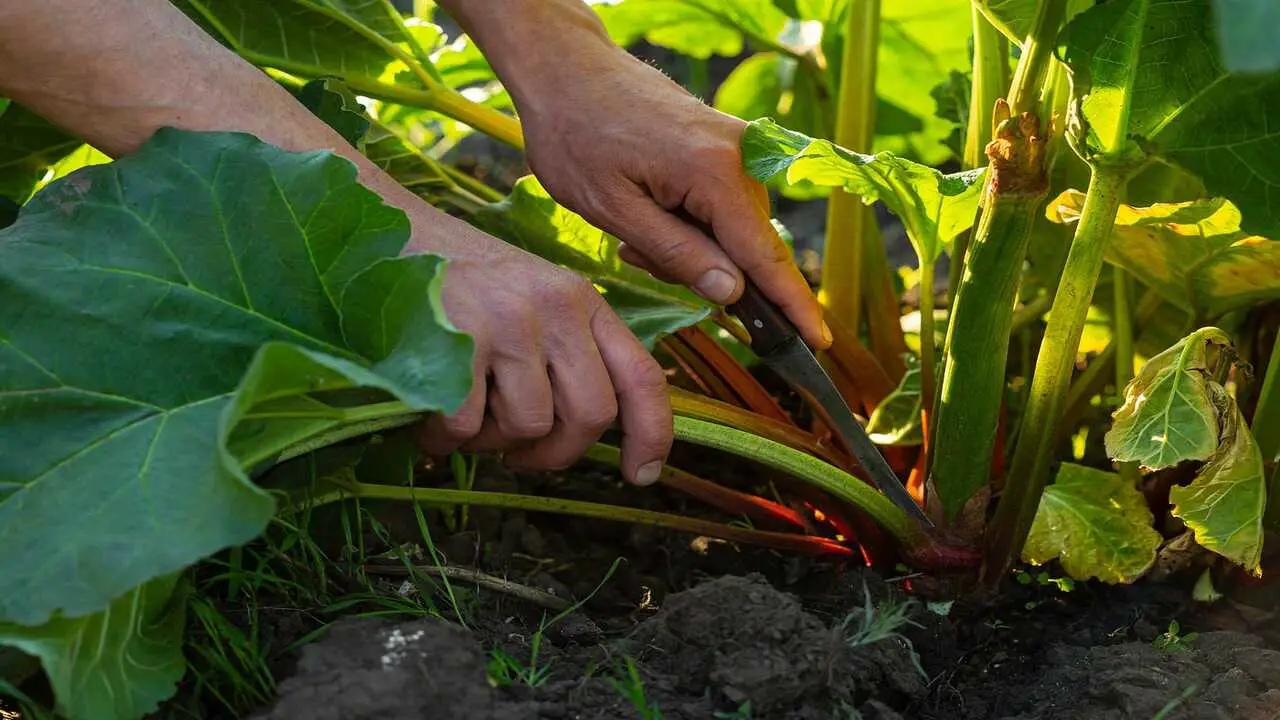
Regarding to growing rhubarb, proper watering and mulching are essential for its successful cultivation. Rhubarb is a perennial vegetable that thrives in moist soil conditions, making it crucial to provide it with adequate water throughout its growing season.
The best approach is to water rhubarb deeply and infrequently, ensuring that the soil is evenly moist but not waterlogged. This can be achieved by applying approximately 1-2 inches of water per week, either through rainfall or irrigation. Mulching is another important practice in rhubarb cultivation as it helps retain soil moisture, control weed growth, and regulate soil temperature.
Benefits Of Growing Rhubarb
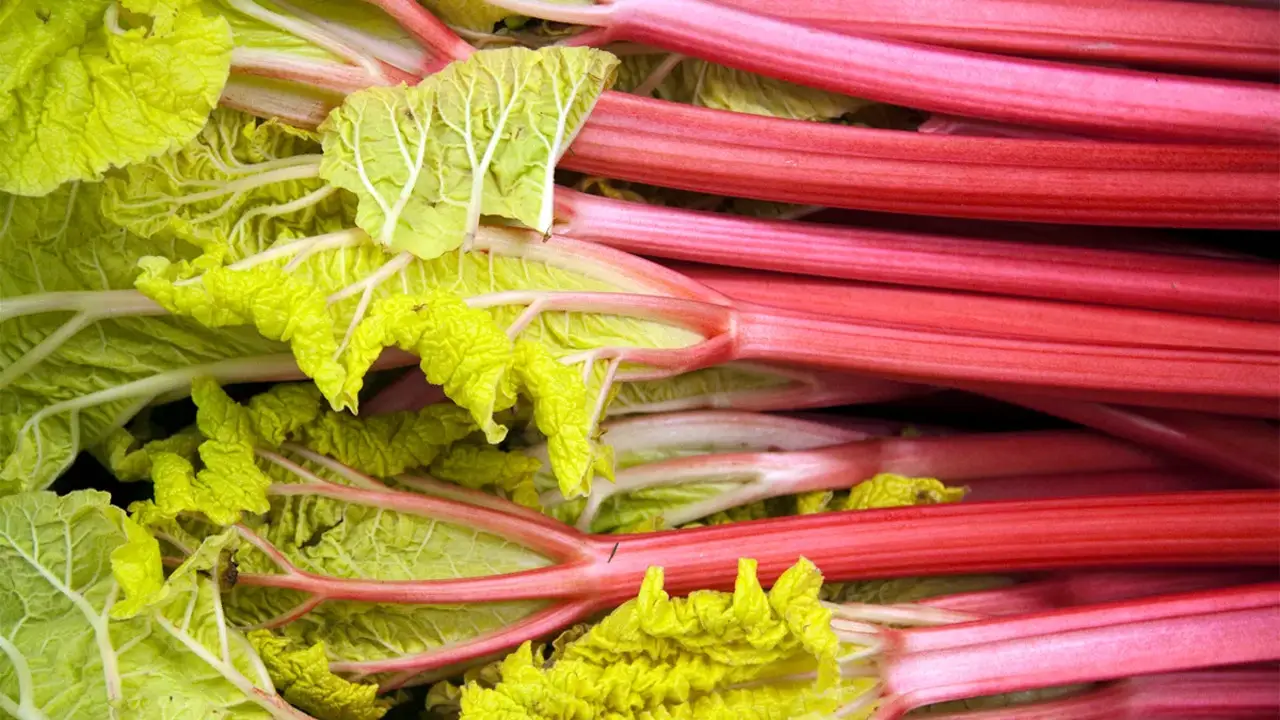
Knowing the benefits of growing rhubarb is essential for individuals who are interested in gardening or horticulture. Rhubarb, a perennial vegetable that is widely cultivated for its edible stalks, offers numerous advantages that make it a valuable addition to any garden or culinary repertoire.
- Rhubarb is a lowmaintenance plant that is easy to grow.
- It is a perennial plant, meaning it will come back year after year, providing a continuous harvest.
- Rhubarb is a versatile ingredient that can be handy in a variety of dishes, including pies, jams, and sauces.
- It is a good source of vitamins and minerals, such as vitamin C, calcium, and potassium.
- Rhubarb is rich in fiber, which can promote healthy digestion.
- It is a low-calorie food, making it a good choice for those watching their weight.
- Rhubarb contains antioxidants, which can help protect the body against cellular damage.
- It has antiinflammatory properties and may help reduce inflammation in the body.
- Rhubarb can be grown in both garden beds and containers, making it suitable for small spaces or urban gardening.
- Growing rhubarb can be a rewarding and enjoyable experience, allowing you to enjoy fresh, homegrown produce.
Caring For Rhubarb Plants
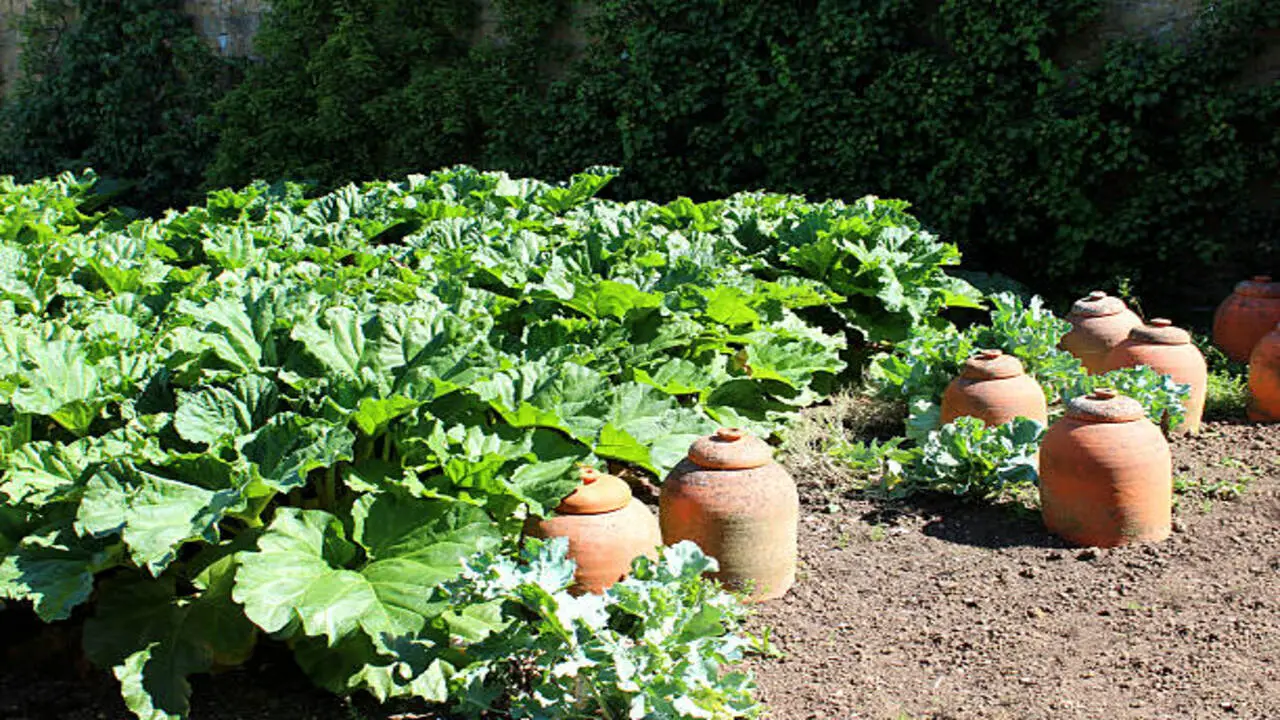
Knowing how to care for rhubarb plants properly is crucial for ensuring their health and productivity. Rhubarb, known for its vibrant red stalks and tart flavor, is a popular addition to many gardens and culinary dishes. However, to maintain the longevity and yield of these plants, it is essential to understand the necessary steps involved in their care.
- Planting: Choose a sunny location with welldrained soil for your rhubarb plants. Dig a hole deep enough to accommodate the roots and plant them with the bud (crown) just below the soil surface.
- Watering: Rhubarb plants require regular watering, especially during dry spells. Keep the soil consistently moist but not waterlogged. Avoid overhead watering to prevent leaf diseases.
- Mulching: Apply a layer of organic mulch around the base of the plants to help retain soil moisture, suppress weeds, and regulate soil temperature.
- Fertilizing: Apply a balanced, slowrelease fertilizer in early spring or compost annually to provide essential nutrients for healthy growth. Avoid excessive nitrogen, as it can lead to weak stems.
- Thinning: Thin out overcrowded rhubarb plants to maintain adequate airflow and prevent diseases. Leave 34 strong and healthy stalks per plant.
- Harvesting: Only harvest rhubarb stalks that are thick and firm.
Harvesting Rhubarb
People commonly associate rhubarb, a versatile and nutritious plant, with its use in delicious desserts and pies. Harvesting rhubarb is a crucial step in ensuring its optimal growth and flavor. To begin the harvesting process, it is important to wait until the plant has reached maturity, typically around two to three years after planting.
This allows the rhubarb to establish a strong root system and develop robust stalks. When the time comes to harvest, it is essential to use a sharp knife or garden shears to cut the stalks at the base, ensuring a clean cut that minimizes damage to the plant.
Please note that only the stalks should be harvested, as the leaves contain toxic substances and should never be consumed. Ideally, you should harvest stalks when they are around 10-15 inches long and have a vibrant color.
Growing Rhubarb: Problem Solving
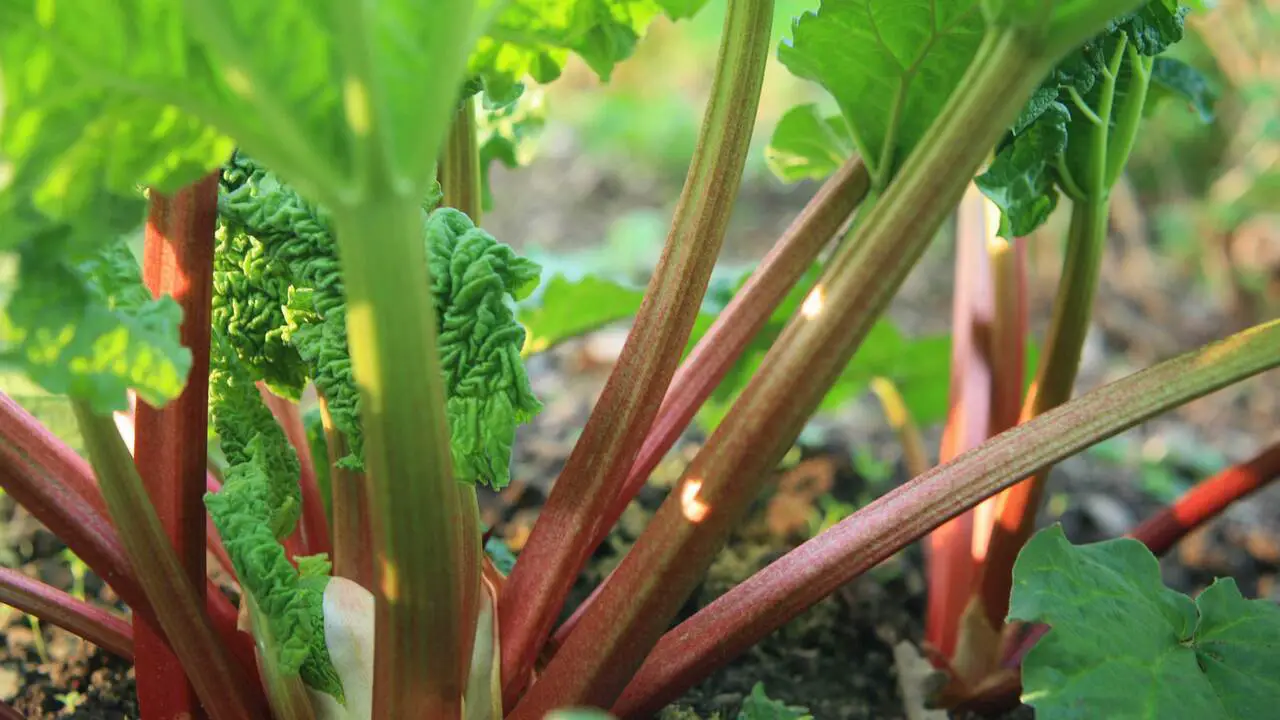
Understanding the process of growing rhubarb is essential for both novice and experienced gardeners, as it enables them to tackle potential problems and ensure successful cultivation. Rhubarb, a versatile and nutritious plant, requires specific conditions and care to thrive.
By familiarizing oneself with the intricacies of growing rhubarb, gardeners can effectively troubleshoot any obstacles that may arise during the cultivation process.
- Rhubarb Plants Not Growing: Check for proper soil conditions and ensure adequate sunlight and water.
- Thin Or Weak Stalks: Consider improving soil fertility and adding organic matter, such as compost or wellrotted manure.
- Rhubarb Leaves Turning Yellow: This could indicate a nutrient deficiency. Apply a balanced fertilizer or amend the soil with nutrientrich compost.
- Rhubarb Stalks Splitting: Avoid overwatering and provide consistent moisture levels to prevent this problem.
- Rhubarb Crown Rot: Ensure proper drainage and avoid overwatering. Remove affected plants and replant them in a different location.
- Rhubarb Pests: Common pests include aphids, slugs, and snails. Use organic pest control methods or consider companion planting to deter pests.
- Rhubarb Diseases: Monitor for signs of fungal or bacterial diseases, such as leaf spots or crown rot. Remove infected plant parts and treat with appropriate fungicides if necessary.
Conclusion:
growing rhubarb is a fairly simple process that requires patience and the right conditions. Growing rhubarb is a rewarding experience that can bring both beauty and flavor to your garden. This hardy and versatile plant is a favorite among gardeners for its tart, ruby-red stalks that are perfect for adding a tangy twist to a variety of dishes.
By following the tips and guidelines outlined in this post, you can successfully grow your rhubarb plants and enjoy their tart, versatile stalks in a variety of dishes. Remember to choose a sunny spot, provide adequate water and nutrients, and harvest properly to ensure a bountiful crop.
With a little care and attention, your rhubarb plants will thrive and provide a delicious addition to your garden and kitchen. If you read the above outline properly, we hope now you understand how to grow rhubarb.
FAQ:
1.When Is The Best Time To Plant Rhubarb?
Ans: Plant rhubarb in early spring, as soon as the soil can be worked. This allows the plant to establish its roots before the warmer weather arrives.
2.What Is The Best Location To Grow Rhubarb?
Ans: Rhubarb thrives in well-drained soil and requires a sunny spot in your garden. Choose an area that receives at least 6 hours of sunlight per day.
3.How Often Should I Water My Rhubarb Plants?
Ans: Rhubarb plants require regular watering, aiming for about 1-2 inches of water per week, especially during dry spells. In order to ensure a successful harvest, it is important to provide these plants with regular watering.
4.When Can I Start Harvesting Rhubarb?
Ans: You can start harvesting rhubarb stalks in the second year after planting when they are thick and about 12-18 inches long. Harvest by pulling and twisting the stalks away from the base.
5.How Should I Care For My Rhubarb Plants?
Ans: Rhubarb plants require regular watering, especially during dry periods. Apply a layer of organic mulch around the base to retain moisture and suppress weed growth. Additionally, it is important to harvest the rhubarb stalks properly by pulling them from the base, avoiding any damage to the crown.

